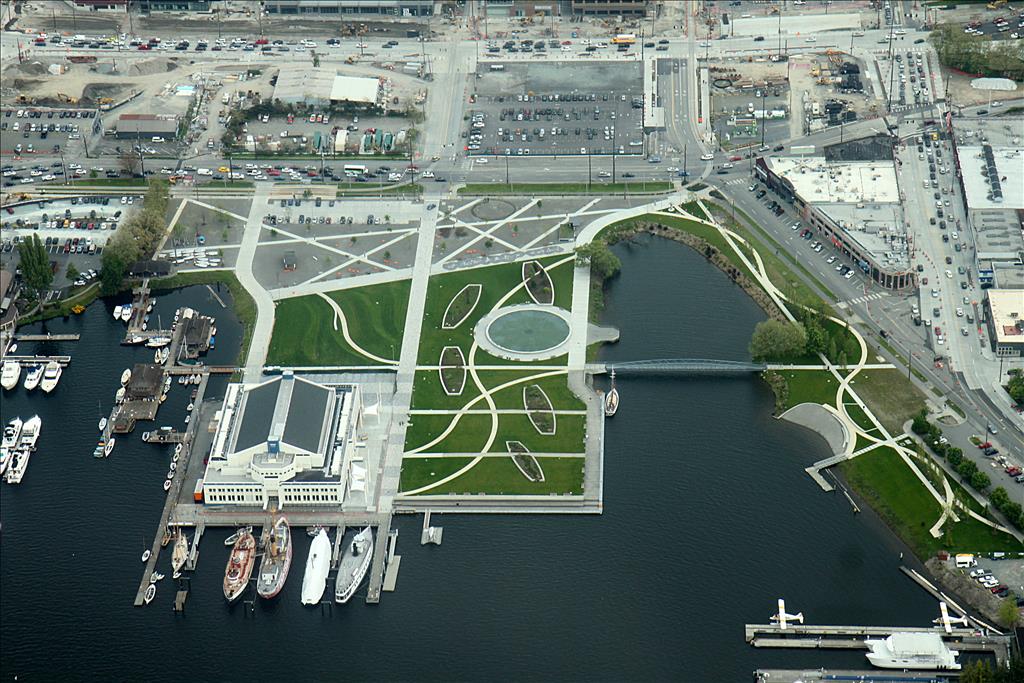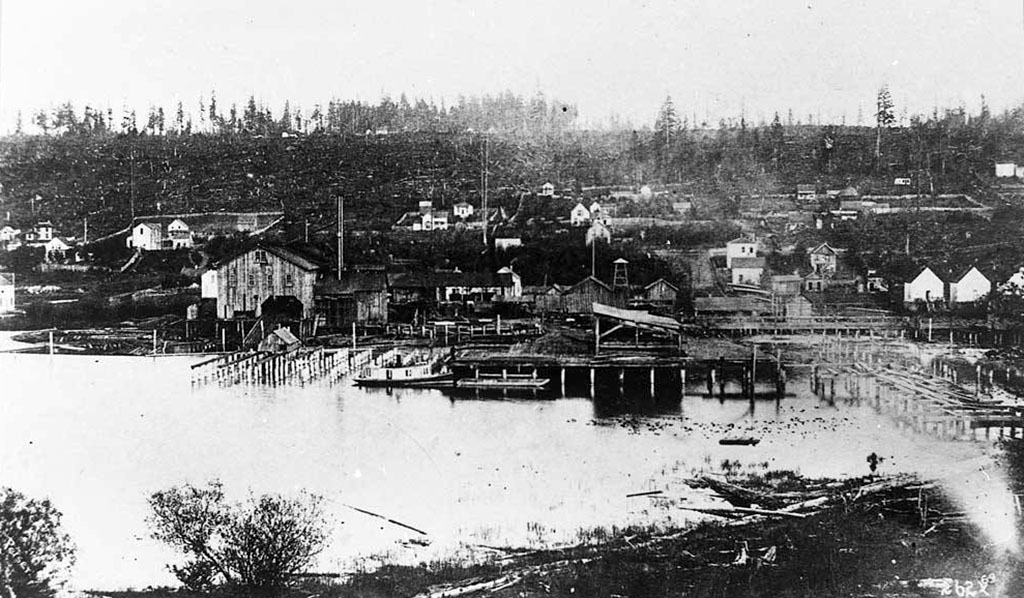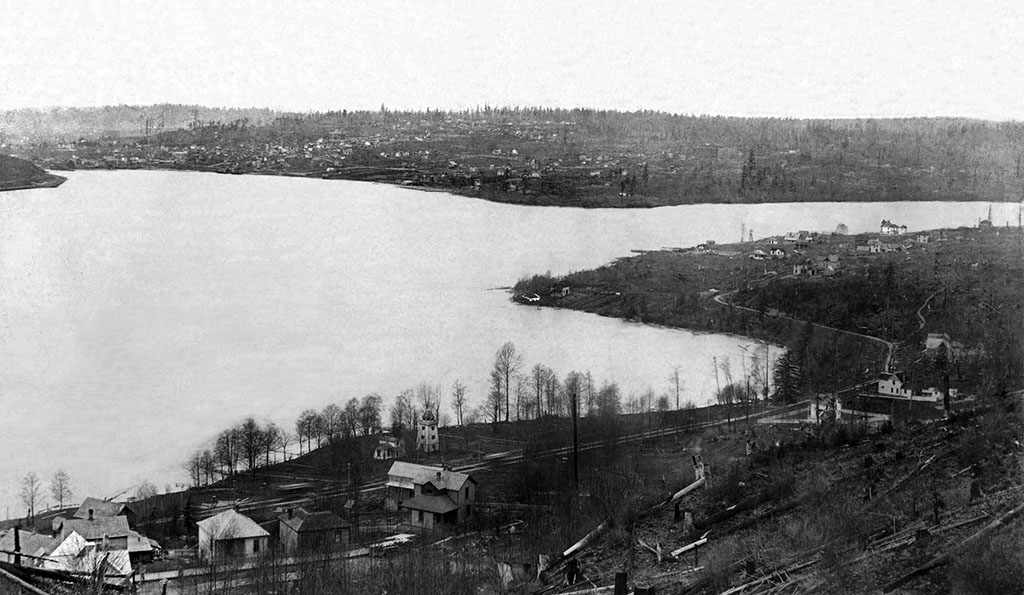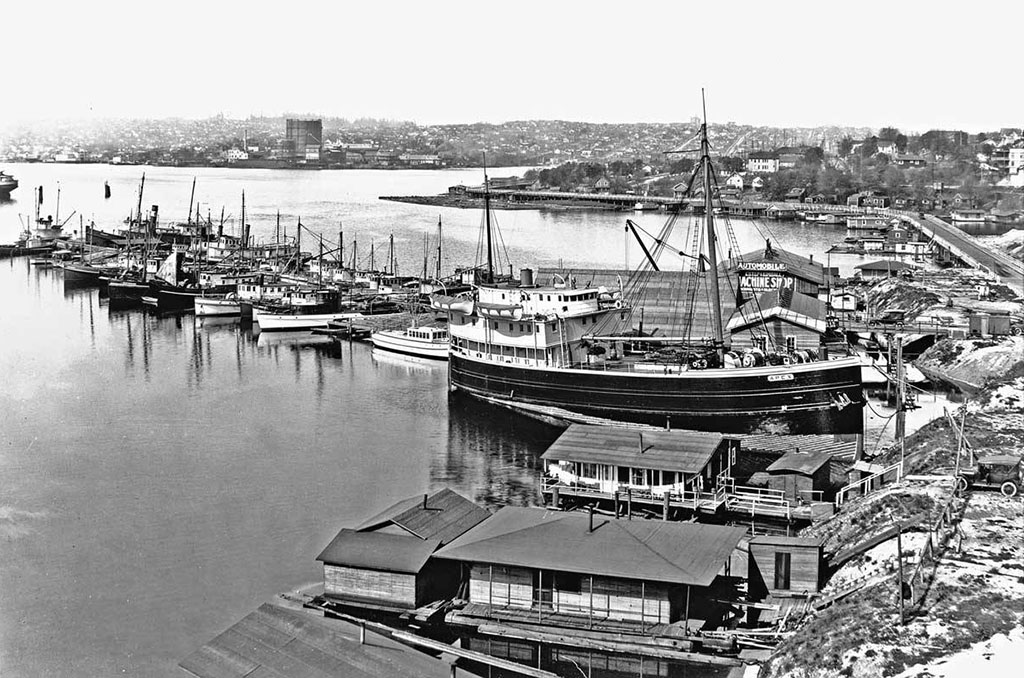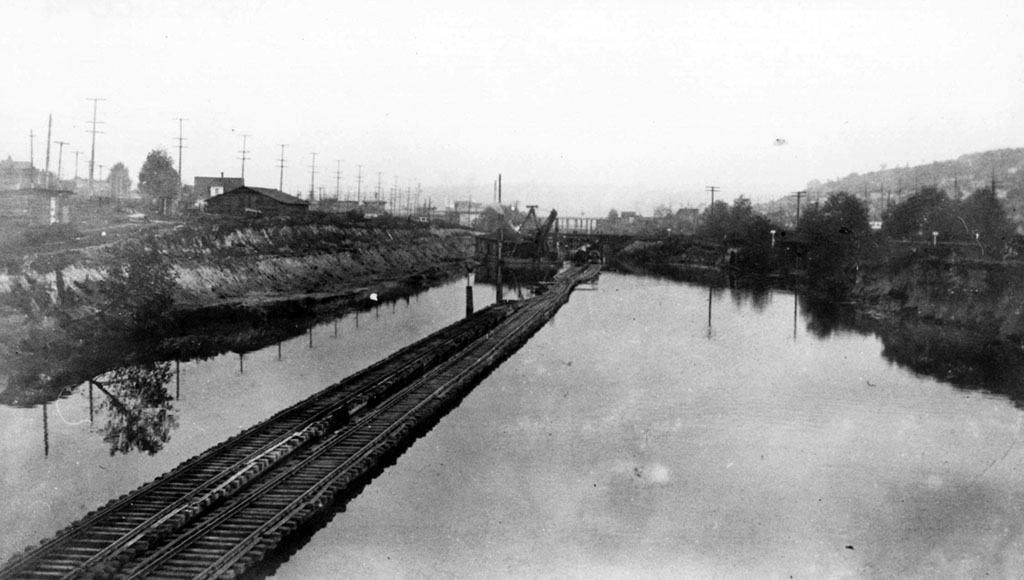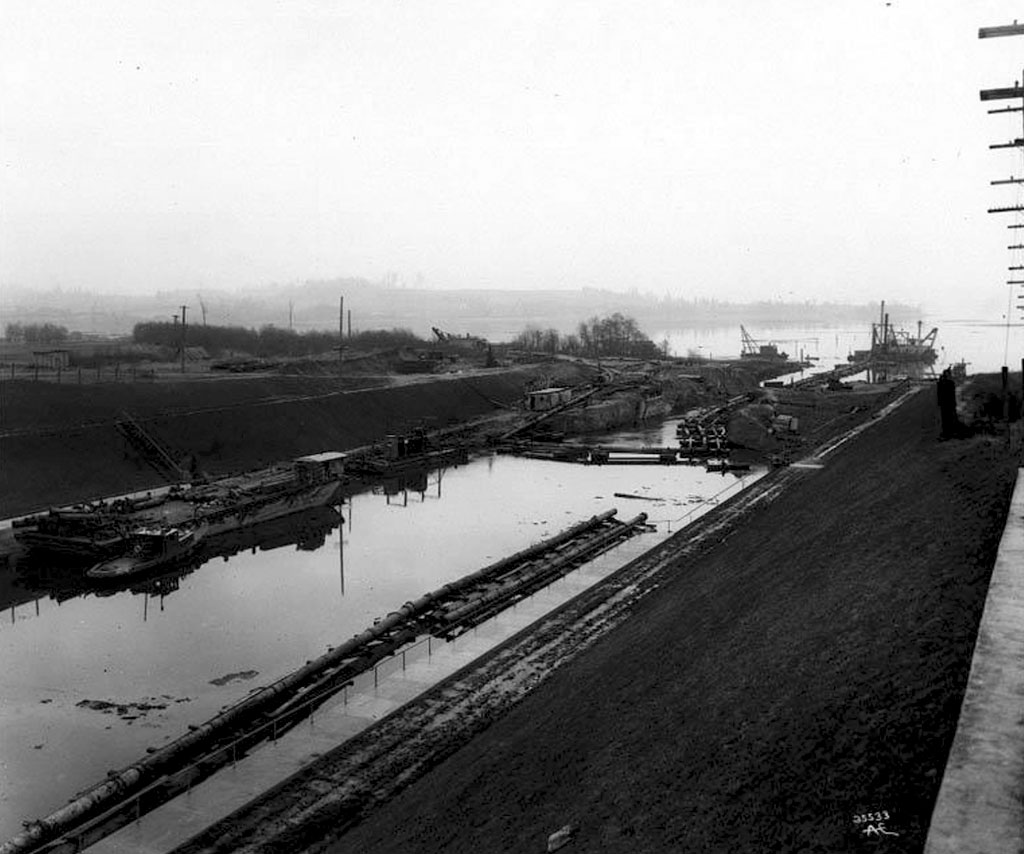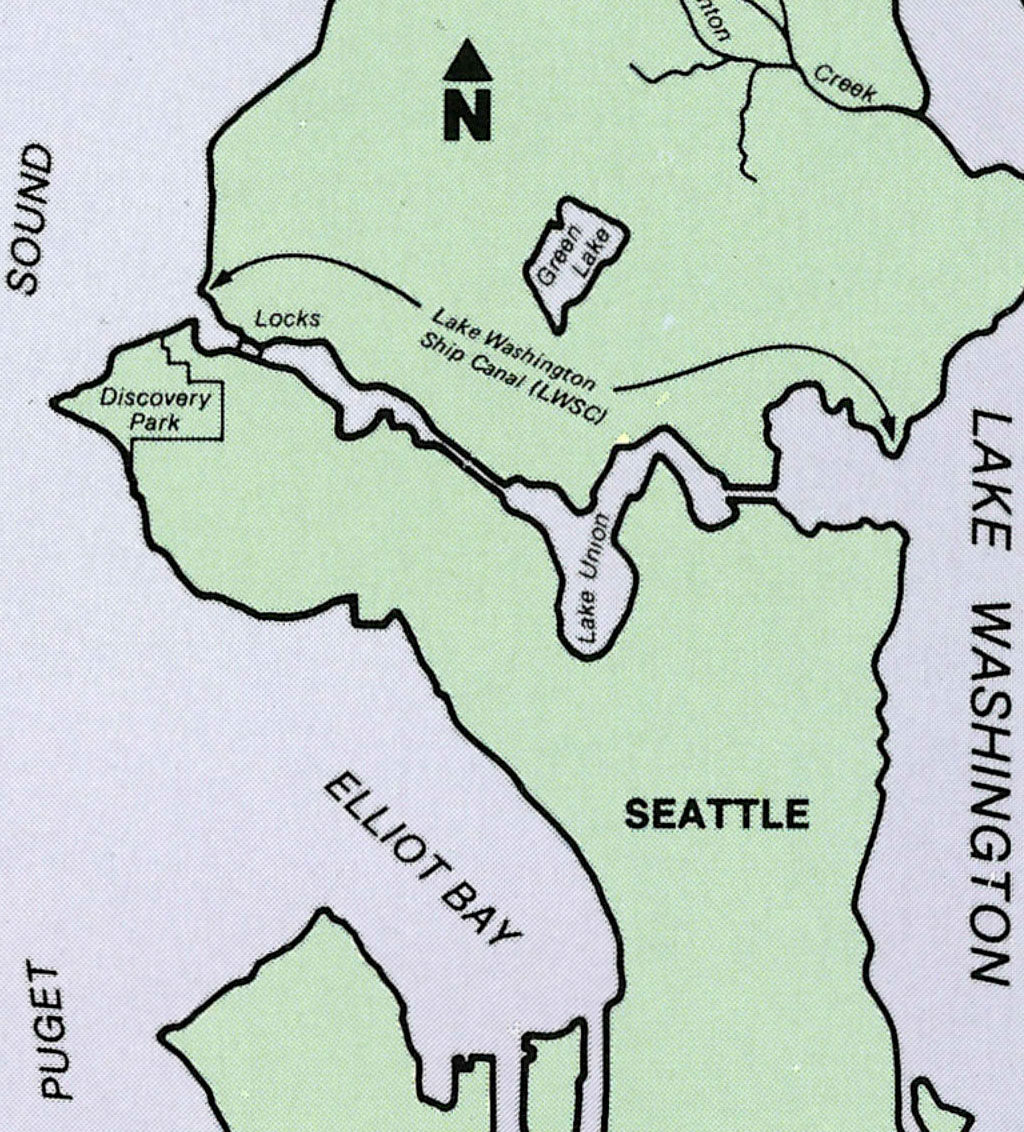Lake Union Shoreline
Tour: Market to MOHAI
-
Lake Union shoreline
If you had arrived at this location in the 1850s, the landscape would obviously look little like it does today. An early survey noted “low wet and Brushy Banks and fallen trees extend into the water. Timber around the Lake, fir, cedar, hemlock, Maple-Alder. Undergrowth Hazel, Willow, Crabapple, Salmon Berry, Gooseberry, Hard-Hack, fern, Salal, nettle and various Kinds of briers.” The biggest Douglas firs had diameters of 80 inches.
And, instead of standing on land, you would have been on the lake’s shoreline, which extended to about Mercer Street. The western shoreline reached almost to 8th Avenue North (then called Vine or Park Street), almost 600 feet from the modern shoreline. At that time, the lake had long been known in Lushootseed as Ha-AH-Chu, or littlest lake, and later as tenas chuck, or little waters, in Chinook Trade Jargon. The modern name originated on July 4, 1854, when Thomas Mercer coined that name in the hopes “of this little body of water sometime providing a connecting link uniting the larger lake and Puget Sound.” Mercer had homesteaded on the shores of the lake, along with David Denny.
The shoreline began to change as industry moved into the area, particularly sawmills such as Lake Union Lumber and Manufacturing and Western Mill. They initially exploited the forests around the lake then with the 1887 creation of a narrow channel to Lake Washington, complete with locks, and obtained trees floated in from the larger lake. As part of the process, the mills created piles of sawdust and debris, which they dumped, along with a few derelict boats, into Lake Union, slowly pushing the shoreline north. It reached its modern location in the middle of the twentieth century with the addition of material from the construction of the Naval Reserve, now the Museum of History and Industry, and Interstate 5. The lake level did not change with construction of the Lake Washington Ship Canal.
Continue north on Westlake Avenue, cross Valley Street, and enter the green space along the water.
